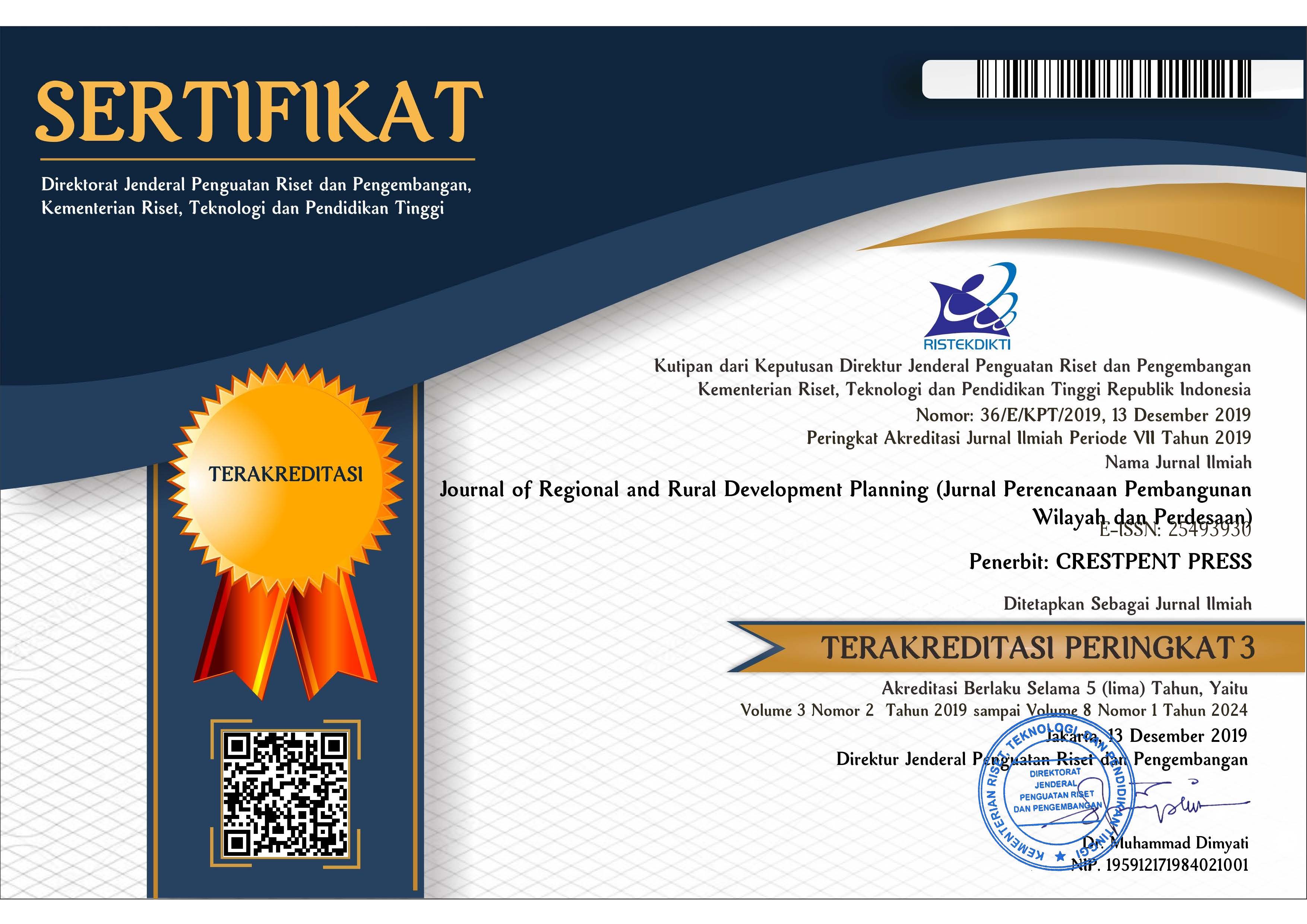Analisis Peranan Subsektor Tanaman Pangan terhadap Perekonomian Jawa Barat
Abstract
Agriculture sector plays important role in regional development. Agriculture sector’s role involves other sectors such as input provider, feed provider, Gross Domestic Product provider, labor provider, and household income main source. One of agriculture subsector is food crop whereas paddy, corn, and soybean are food crop commodities that have important and stategic roles in development. Their production are targeted to achieve self sufficiency by 2017. The main objective of this research was to analyze the role of food crop subsector to West Java’s economy. The specific objective of this research involve output structure analysis, gross added value structure analysis, linkage analysis, and final demand impact analysis. This research employs secondary data. Secondary data used West Java Input-Output Table 2010. Secondary data analysis applies input output anaylisis to answer objective of this research among output structure analysis, gross added value structure analysis, linkage analysis, final demand impact analysis. The results showed that the food crop’s output structure and gross value added structure tends to low. Food crop also does not show strong linkage with its upstream sectors and downstream sectors. Final demand impact to output, gross added value, and household income also show that the food sector is low even though the food crop has better ability to absorb labor than of processing industry sector.References
Astrini, U. R. (2013). Analisis Revitalisasi Sektor Pertanian dalam Pembangunan terhadap Perekonomian di Jawa Timur Melalui Pendekatan Input-Output. Jurnal Ekonomi Pembangunan, 2(3), 159-174.
Badan Pusat Statistik. (2017). Statistik Indonesia 2017.
Badan Pusat Statistik Provinsi Jawa Barat. (2013). Tabel Input-Output Provinsi Jawa Barat Tahun 2010.
Badan Ketahanan Pangan. (2015). Direktori Perkembangan Konsumsi Pangan. Jakarta: Badan Ketahanan Pangan.
Capone, R., Bilali, H. E., Debs, P., Cardone, G., & Driouech, N. (2014). Food System Sustainability and Food Security: Connecting the Dots. Journal of Food Security, 2(1), 13-22.
Daryanto, A. & Hafizrianda, Y. 2010. Analisis Input-Output dan Social Accounting Matrix untuk Pembangunan Ekonomi Daerah. Bogor: IPB Press.
Kementerian Perencanaan Pembangunan Nasional/ Badan Perencanaan Pembangunan Nasional. (2014). Rencana Pembangunan Jangka Menengah Nasional 2015 -2019.
Novita, D., Rahmanta, & Mahalli, K. (2009). Dampak Investasi Sektor Pertanian terhadap Perekonomian Sumatera Utara (Pendekatan Analisis Input-Output). Jurnal Perencanaan dan Pengembangan Wilayah, 4(3), 131-141.
Razak, M. I. M., Hamzah, A. S. M. A., Abas, N., Idris, R., & Ibrahim, Z. 2013. Sustaining Food Production for Food Security in Malaysia. Journal of Economics and Development Studies, 1(2), 19- 25.
Rustiadi, E., Saefulhakim. S., & Panuju. D. R. (2011). Perencanaan dan Pengembangan Wilayah. Jakarta: Yayasan Pustaka Obor Indonesia, 249–264.
Saravia-Matus, S. L., Paloma, S. G., & Mary, S. (2012). Economics of Food Security: Selected Issues. Bio-based and Applied Economics, 1(1), 65-80
Sukanto, D. G. T. (2011). Analisis Peranan Sektor Pertanian terhadap Perekonomian Jawa Tengah (Pendekatan Analisis Input-Output). Jurnal Ekonomi dan Bisnis, 1(2), 13-25.
Suryantini, A., Hartono, S., Nurhayati A, & Widyaningsih, W. (2015). Peran Sektor Pertanian terhadap Perekonomian Daerah Istimewa Yogyakarta. Jurnal Social Economic of Agriculture, 4(1), 1-13.
Wijaya, I. R. A., Masyhuri, Irham, & Hartono, S. (2014). Analisis Input Output Pengolahan Tembakau di Provinsi Jawa Timur. Agro Ekonomi, 24(1), 1-9.
Copyright (c) 2018 Journal of Regional and Rural Development Planning

This work is licensed under a Creative Commons Attribution-ShareAlike 4.0 International License.




.png)














